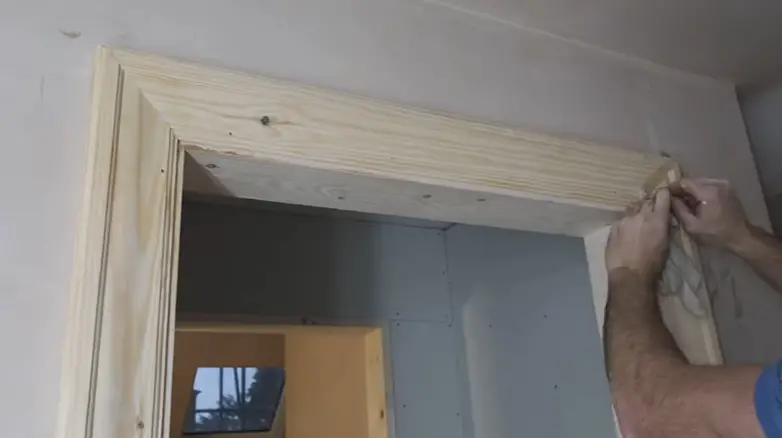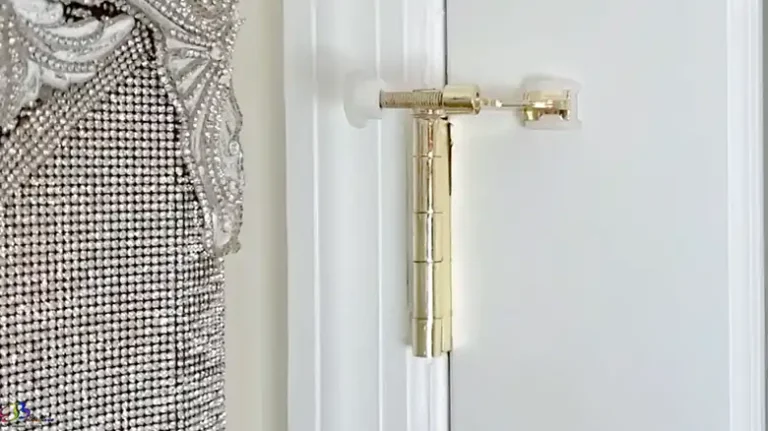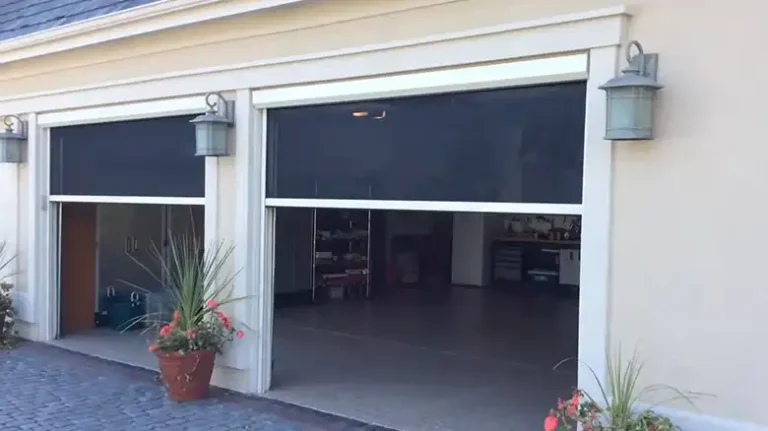Can You Hang a Door Without Architrave?
Architraves, the ornamental trim and moldings that surround doors, windows and openings, have been a hallmark of classical architecture for centuries. But in recent years, there has been a distinct move towards minimalism in interior design. This has led many contemporary homeowners to ask: can you forgo architraves and hang doors without any trim at all?
In most cases, the answer is yes – with careful planning and workmanship, it is possible to install doors without architraves. This streamlined look aligns beautifully with pared-down modern and industrial styles. However, omitting architraves does require special attention to achieve ideal aesthetics and functionality. Meticulous finishing and sturdy door construction become especially important.
So, let’s explore the unique considerations, installation methods, and finishing touches involved in integrating architrave-free doors. You’ll gain insights on optimizing both appearance and performance so that doors feel like natural extensions of their sleek surroundings, and so on.

Role of Architraves in Door Installation
Before evaluating whether architraves can be omitted, it’s important to understand their intended role in traditional door installation and home construction.

Decorative Purpose
Architraves provide decorative framing around doors, complementing the style and details of the door itself. The proportions and profile of the trim molding tend to reflect the architectural style of the home. Elaborate, carved architraves are prominent in ornate Victorian and colonial styles, while simple, geometric designs align with Craftsman bungalows. This ornamentation creates visual interest and elegance around openings.
Transition and Alignment
In addition to aesthetics, architraves serve some key practical functions. They create a straight, finished transition between the interior trim and the door frame, concealing any gaps or irregularities where the different components meet. The consistent molding alignment provides a sense of order and polish.
Insulation and Weatherproofing
Architraves also contribute an insulating layer and barrier against drafts around doors. The snug fit offered by trim creates a tighter seal for improved energy efficiency and weatherproofing. This becomes especially important around exterior doors.
Impact Protection
The additional framing provides a protective buffer if doors or surrounding walls are bumped or damaged. Architraves take the brunt of the impact rather than the door or wall itself. This safeguards against wear, marking, and repairs over time.
Enhanced Soundproofing
The extra layer of dense material dampens vibrations and blocks sound transmission more effectively. Home theaters, bedrooms, and offices benefit from the enhanced soundproofing architraves provide.
In summary, architraves offer aesthetic enhancement along with practical weatherproofing, soundproofing, impact resistance, and alignment around door openings. But are they mandatory? Can doors be hung effectively without them?
Rise of the Minimalist Look
Over the past decade, sleek, minimalist architecture and interior design have soared in popularity. This pared-back aesthetic eschews intricate trimwork and embraces clean lines, negative space, and seamless transitions between materials.
Large swaths of unadorned drywall, monochromatic color schemes, concealed storage, and streamlined silhouettes characterize this look. As part of the movement away from complex moldings and ornamentation, many designers are opting to hang doors without any architraves at all.
Benefits of the Architrave-Free Look
There are several advantages to this spare, simplified appearance –
- Creates a sense of order and visual calm through negative space and the absence of detail
- Allows the inherent textures and grains of wall materials to shine through
- Highlights the architecture and lines of the doors themselves
- Expands perceptions of openness and space, especially in smaller areas
- Provides a cost-effective alternative to intricate trimwork
- Aligns seamlessly with contemporary architecture and finishes
- Makes a strikingly modern design statement
For these reasons, omitting architraves holds great appeal for current minimalist and modern aesthetics. But how does this impact functionality?
Factors to Consider When Hanging Doors Without Architraves
Eliminating architraves may be desirable aesthetically, but also poses some potential downsides related to door performance, durability, and overall integration. Here are the key considerations:
Appearance and Finishing
Without architraves to bridge any gaps, the transition between the door frame and wall opening becomes highly visible. Any irregularities, unfinished edges, or variations in height will be conspicuous. Precise cutting, expert installation, high-quality drywall finishing, and attention to detail are imperative for a flush, polished look.
Keep in mind that contrasts in colors and textures between the door, hardware, frame, and surrounding wall will be more pronounced without an architrave to provide a visual break. Take time to visualize these material pairings to ensure an integrated, harmonious look.
Thoughtful lighting choices also help showcase clean lines and sleek finishes, while concealing any minor flaws. The finished effect should appear intentional, not haphazard.
Functionality and Performance
Despite their modest proportions, architraves do impact door functionality in ways that become more noticeable in their absence. Removing them risks increased air infiltration as the seal around the door becomes less airtight. This can lead to higher energy costs from heating and cooling loss. Draft blocking and weatherstripping become even more critical to counterbalance this effect.
Lacking protective trim, the door edges themselves absorb more direct impact, increasing the chances of dents, chips, or splitting over time. Stronger door materials and added edge guards help safeguard against damage. Door stops may also need adjustment so the door doesn’t violently contact the wall.
Soundproofing will decrease without the sound-dampening architraves provided. Solutions like thicker doors, seals and dropped thresholds help mitigate this issue in bedrooms, offices, and other quiet spaces.
Overall door alignment, closing, and operation may require added care and precision when installed directly into the wall opening. Hinge positions, jamb thickness, and other hardware details make a difference.
Long-Term Maintenance
The exposed gap between the door and wall receives closer scrutiny without architraves. Meticulous finishing and paint lines are important for an integrated look. The edges become more prone to scuffs and marks with daily use, requiring extra vigilance in cleaning and touch-up paint. Any repairs needed down the road to the walls or door will be immediately evident.
Taking steps to increase durability – like edge guards and impact-resistant materials – helps minimize maintenance. Regular sealing, inspections, and care preserve the minimalist aesthetic long-term.
Best Practices for Hanging Doors Without Architraves
If opting for an architrave-free look, specialized installation practices ensure the door functions as beautifully as it appears. Here are the top techniques for seamless results:
Select the Right Door and Hardware
Choose a high-quality door built from durable, dense materials like solid wood, steel, or fiberglass. Check hardware accommodates a snug, flush fit against the wall opening. For soundproofing, solid core doors and perimeter sealing are ideal.
Customize Framing for a Precise Fit
Work with carpenters to create framing and jambs tailored specifically for an architrave-free installation, with no gaps needing filler trim. This may involve adjusting stud positions, header sizes, or drywall cutouts.
Factor in Adequate Wall Finishing
Build out wall depth and finishes to entirely conceal the jamb. Multi-layered drywall with skim coats ensures a smooth plane for painting. Use painter’s caulk at the edges for a continuous appearance.
Include Insulation and Air Sealing
Seal all gaps and cracks thoroughly with acoustical caulk. Ensure weatherstripping makes full contact with the door. Add insulation behind jambs and at the header and sill.
Incorporate Edge Protection
Protect door edges from dings and scuffs with added metal or wood edge guards. Or choose doors with manufactured edges made for architrave-free looks.
Use Durable, Low-Contrast Finishes
Select paint sheens and colors that downplay any minor flaws and maintain fresh-looking seams over time. Satin or eggshell finishes hide scuffs better than gloss.
Check Alignment and Clearances
Confirm all margins between the door, frame, and wall are perfectly aligned with no binding. Doors should latch easily without hitting walls. Adjust hinges or stops if needed.
Consider Decorative Alternatives
For accent details, integrate creative grooves, shadow lines, or metal reveals to replace architraves with an architectural focus.
With proper planning and workmanship, it’s completely achievable to hang doors without traditional architraves. But small refinements make a difference in optimizing durability and aesthetics.
Unique Considerations for Specific Spaces
Certain rooms and door types warrant extra forethought when eliminating architraves due to increased demands.
External Entry Doors
As vital weatherproofing barriers, exterior doors benefit greatly from architraves’ insulating qualities. Take additional steps to fully seal gaps and prevent air infiltration. Iron or fiberglass doors provide needed durability. Protective overhangs above the door help limit water exposure.
Bathrooms and Kitchens
Where moisture is prevalent, maintaining a water-tight seal becomes more critical. Avoid steel doors prone to rusting. Use moisture-resistant paints and varnishes to preserve the crisp finish. The ease of cleaning and sanitizing door surfaces also matters in these spaces.
Bedrooms and Home Offices
With their need for peaceful environments, minimizing sound transmission through bedroom and office doors remains important for rooms without architraves. Solid core doors with complete acoustic seals excel here.
Utility and Storage Rooms
For purely functional doors that see heavy use, impact resistance and durability come to the fore, while appearance diminishes as a priority. Reinforced metal doors withstand wear and tear in utility spaces.
Regardless of the room, the core installation principles remain the same. But factoring in the unique demands of certain spaces when choosing materials and finishes ensures optimal performance.
Creative Alternatives for Modern Trims
While removing architraves completely achieves a very streamlined effect, there are some modified trim options that provide subtle detailing in keeping with pared-down aesthetics. These alternatives help integrate doors gracefully while nodding to minimalist concepts:
Shadow Gap Trim
Recessing trim slightly from the door frame creates an elegant, understated shadow line. The gap adds just a hint of separation for a clean look that still manages transitions neatly.
Metal Edge Banding
Thin stainless steel, brass or powder-coated aluminum wrapped along door edges adds durable protection. Sleek metal tones complement modern styles.
Simple Beading
Rather than ornate moldings, discreet hand-worked beading offers a cost-effective, fuss-free trim solution with artisan appeal.
Grooved, Oversized Frames
Wide frames with recessed horizontal and vertical grooves provide subtle detailing while still allowing doors to fit flush.
Continuous Materials
Carrying flooring materials like tile or hardwood to run up the wall seamlessly integrates doors for a tailored, built-in look.
Integrated Jambs
For a nearly invisible effect, floor-to-ceiling jambs concealed within walls align doors utterly flush without trim embellishments.
With inventive materials and clever positioning, door surrounds can still offer nuanced style even when traditional architraves are excluded.
Bottom Line
Ultimately, the decision of whether or not to omit architraves comes down to priorities. If pursuing a strict minimalist vision, removing all trim creates an impressively streamlined look aligned with contemporary architecture. However, this route requires heightened precision in installation and finishing to maintain aesthetics and functionality. For those less inclined towards an ultra-sparse look, creative contemporary trim alternatives allow doors to flow with décor while nodding to minimalism.
Above all, room usage and performance should help guide architrave choices. For everyday living areas, flexibility and small flourishes of ornamentation often make spaces more livable long-term. Bedrooms, offices, and media rooms rely on acoustic insulation that architraves bolster. But for little-used rooms like laundries and storage closets, strictly utilitarian door installation fits the need.
By thoughtfully balancing personal style, room demands, craftsmanship, and materials, it’s absolutely possible to beautifully integrate doors without architraves into modern homes. With an insightful designer or architect as a guide, you can craft an interior true to your aesthetic vision and practical needs.
Related FAQs
What maintenance is required for doors without architraves?
Doors without architraves require more vigilance in sealing, cleaning, and touch-up painting. Check for cracks or wear around exposed edges seasonally and reseal as needed. Lightly sand and repaint any scuffs on door edges or surrounding walls annually to maintain a crisp look. Avoid cleaning products that could damage painted surfaces.
How do doors without architraves impact heating and cooling costs?
Lacking protective trim, gaps around the door become more prone to airflow which can increase energy costs. Take steps to fully weatherstrip and insulate doors to counteract this. High-performance glazing on nearby windows also helps control temperature fluctuations. Consider recentering doors on insulated interior walls rather than uninsulated exterior walls.
Can you add architraves later if desired?
It is possible to add architraves around existing doors but requires reframing the door jamb, patching walls, adjustments to trim, and precise painting. Hiring a skilled carpenter and painter results in the best outcome if attempting to retrofit architraves. Factoring removable trim into the initial design is an easier option for flexibility.
REFERENCE:
- https://www.mybuilder.com/questions/v/56366/does-a-door-frame-needs-architrave-both-inside-and-outside#:~:text=If%20the%20opening%20has%20a,a%20hinged%20door%20closes%20against).
- https://www.houzz.co.uk/discussions/5876963/do-internal-doors-have-to-have-architrave-round-them
- https://www.diynot.com/diy/threads/door-frame-with-no-architrave.182785/




![[Answered] How Long Does It Take to Put in a Front Door](https://doorsuggest.com/wp-content/uploads/2023/10/How-Long-Does-It-Take-to-Put-in-a-Front-Door-768x431.webp)
